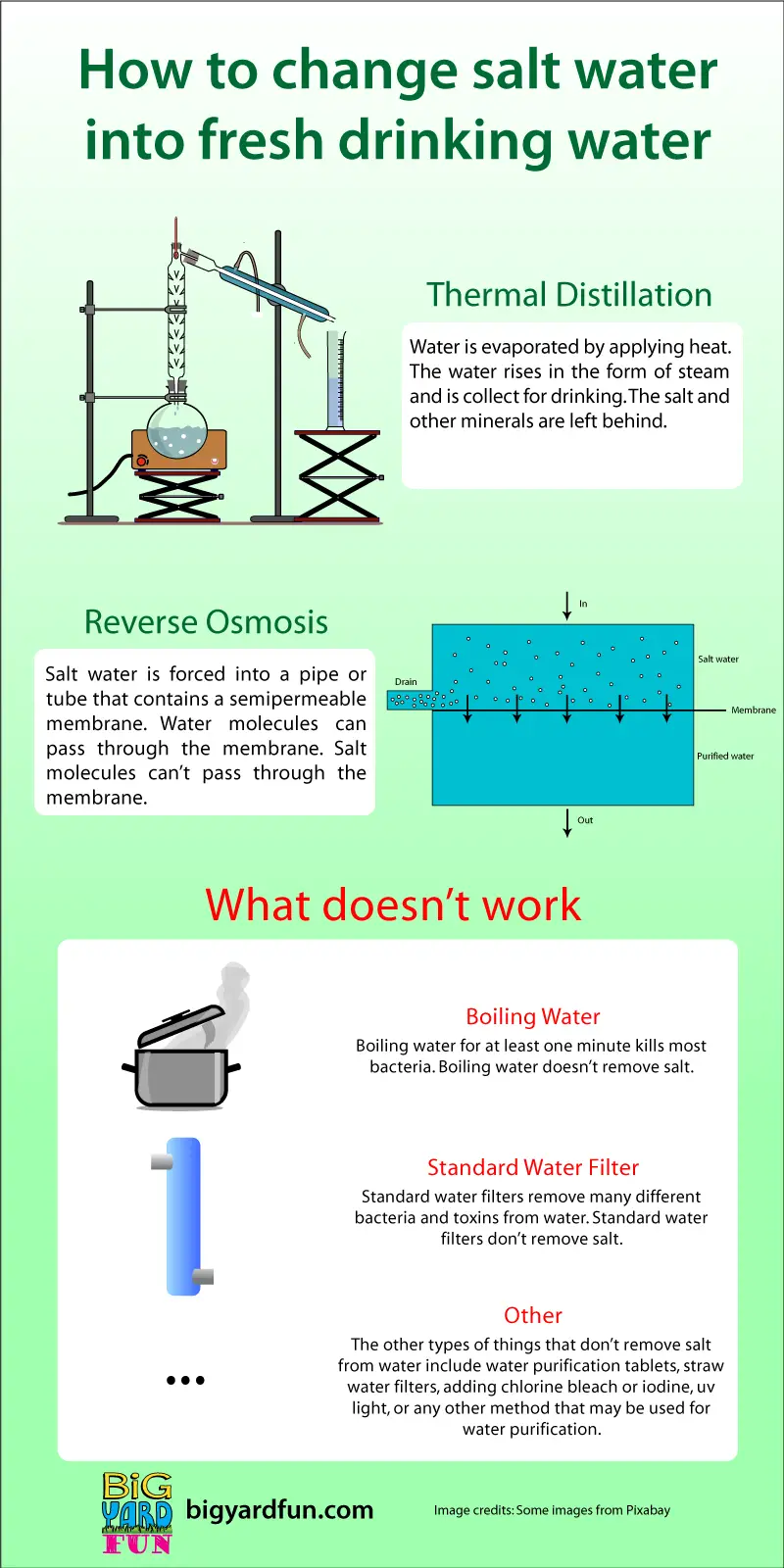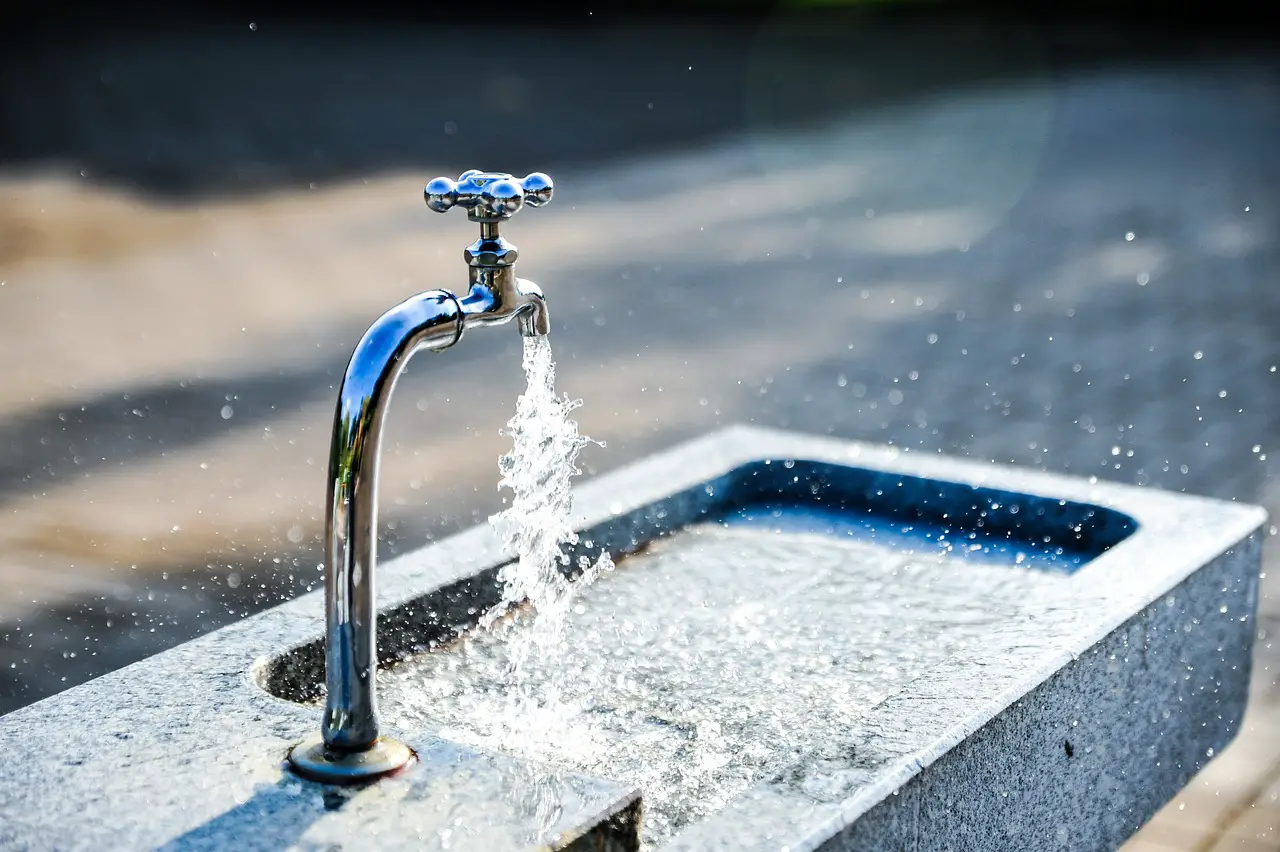Ever found yourself stranded on an island (like in those Hollywood flicks) or simply curious about how to make that vast ocean of saltwater drinkable? Well, you’re in for a treat. Today we delve into the depths of desalination, exploring simple yet effective methods for making salt water potable. Buckle up and get ready for a deep dive!
The Basics of Desalination
Understanding Why Saltwater Is Not Potable
First things first, why can’t we consume sea water directly? Drinking saltwater leads to dehydration. This is because our kidneys can only produce urine less salty than salt water. Therefore, for every cup of seawater you drink, your body needs more freshwater to dilute the excess salts.
The Science Behind Desalination
Desalination is the process whereby salts and other minerals are removed from seawater or brackish water making it safe to drink. There are different techniques applied in this process but most revolve around distillation – converting water into steam then condensing it back into liquid form.
Worldwide Use of Desalination
Today, there are over 18,000 desalination plants worldwide servicing over 300 million people. Most are located in Middle Eastern countries like Saudi Arabia and Israel where freshwater resources are limited.

Please use the code below if you would like to embed this infographic on your site.
<a href="https://bigyardfun.com/how-to-make-salt-water-drinkable/"><img style="width:100%;max-width:800px" src="https://bigyardfun.com/wp-content/uploads/2023/09/salt-water-to-fresh-water.png"></a><br>Infographic By <a href="https://bigyardfun.com">Bigyardfun.com</a>DIY Desalination Methods
We’re going to discuss three do-it-yourself methods suitable for survival situations or if you just want an exciting weekend project!
Solar Still Method
A solar still uses sunlight to evaporate and condense water thereby removing impurities including salts.
- Materials Needed: A wide container (like a bowl), a smaller cup/container, plastic wrap and small rock.
- Process: Place the cup in the center of the wide bowl filled with saltwater. Cover the setup tightly with plastic wrap and place a small rock on top, right above the cup. As sunlight heats up the system, water will evaporate, condense on the plastic wrap and trickle down into the cup.
- Advantages and Disadvantages: This method is simple and requires readily available materials. However, it takes time and yields little water.
Fire Distillation
This method involves boiling saltwater to create steam then cooling it to collect freshwater.
- Materials Needed: Two containers (one should fit inside another), a heat source like firewood or gas stove, and a lid or sheet of metal/plastic.
- Process: Pour saltwater into a large pot leaving some space at the top. Place an empty smaller container in it ensuring no water gets inside. Cover with an inverted lid (curving inward). Boil this setup. As steam hits the cool lid surface, it’ll condensate forming droplets that’ll flow into the smaller container.
- Advantages and Disadvantages: It’s faster than the solar still method but demands fuel for heating.
Evaporation Trap
Here we use evaporation to separate fresh water from salt.
- Materials Needed: Digging tools, plastic sheeting, collection container, small rock.
- Process: Dig a hole near the seashore where you can find moist sand. Place your collection container in the hole’s center covered by a plastic sheet secured by rocks at the corners. Put a tiny rock in the middle of the sheet above the container creating an indent for condensed vapor to drip into your pot.
- Advantages & Disadvantages: Does not require any fuel but takes a significant amount of time.
Limitations of DIY Desalination Methods
While these methods are suitable for survival situations or science experiments they do have limitations such as:
Limited Output
These methods yield very limited amounts of water. They’re not ideal for providing large quantities of freshwater.
Time and Energy Intensive
DIY desalination methods often require a lot of time and in some cases, significant energy to perform the desalination process.
Quality Control Issues
While these methods can remove a significant amount of salt, they may not effectively eliminate other contaminants like bacteria and viruses.
Advanced Desalination Techniques
Now let’s touch on advanced techniques used in industrial scale desalination plants.
Reverse Osmosis
Reverse osmosis forces seawater through semi-permeable membranes under pressure separating water from salts. It is highly efficient but requires a significant amount of energy.
Multi-Stage Flash Distillation
Here seawater is heated under high pressure causing rapid evaporation (or ‘flashing’). This happens across several stages each at lower temperatures thereby maximizing water production.
Electrodialysis
Electrodialysis uses electricity to draw salts out through special membranes. It’s more effective with brackish waters than seawater because it has fewer salts to remove.
Environmental Impact of Desalination
Desalination isn’t without its environmental concerns:
High Energy Use
Desalination, especially reverse osmosis, requires immense amounts of energy.
Brine Disposal
The byproduct of desalination is highly concentrated brine which if improperly disposed can harm marine life when returned to the sea.
The Future of Desalination
Research continues into more sustainable ways to carry out desalination:
Renewable Energy Powered Plants
Solar or wind-powered plants could drastically reduce reliance on fossil fuels making the process greener.
Better Membrane Technology
Advancements in membrane technology could increase efficiency thus reducing both energy usage and cost per liter of freshwater produced.
Addressing Brine Disposal
Research into efficient brine disposal methods or even profitable uses for the byproduct could help mitigate ecological damage.
Wrapping Up
And there you have it, folks! We’ve sailed across the vast ocean of desalination, from understanding its basics, DIY methods, industrial techniques to future prospects. Remember, while these survival tricks might save you in a pinch, the ultimate solution lies in preserving our existing freshwater resources. After all, conservation is key!
Stay curious and keep exploring!

